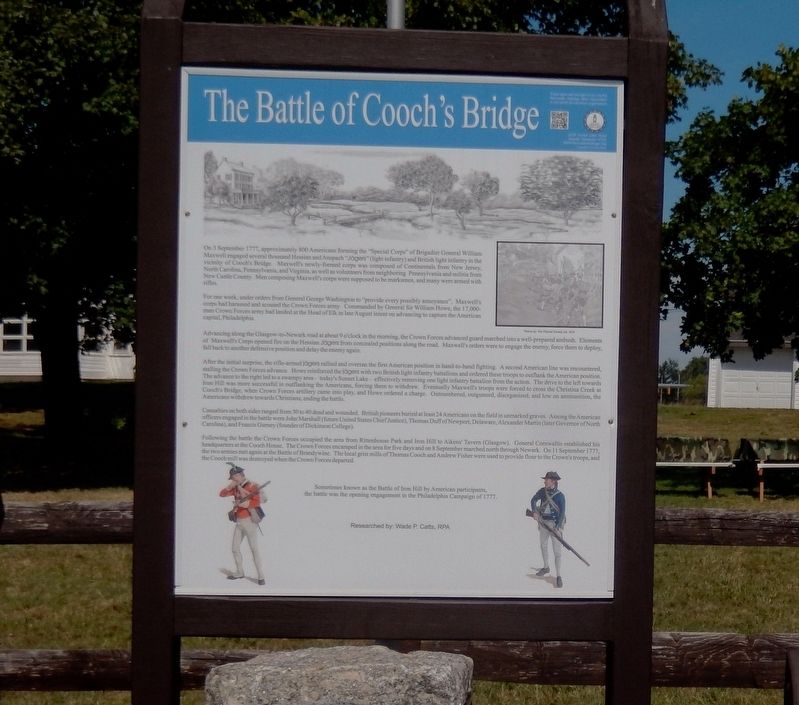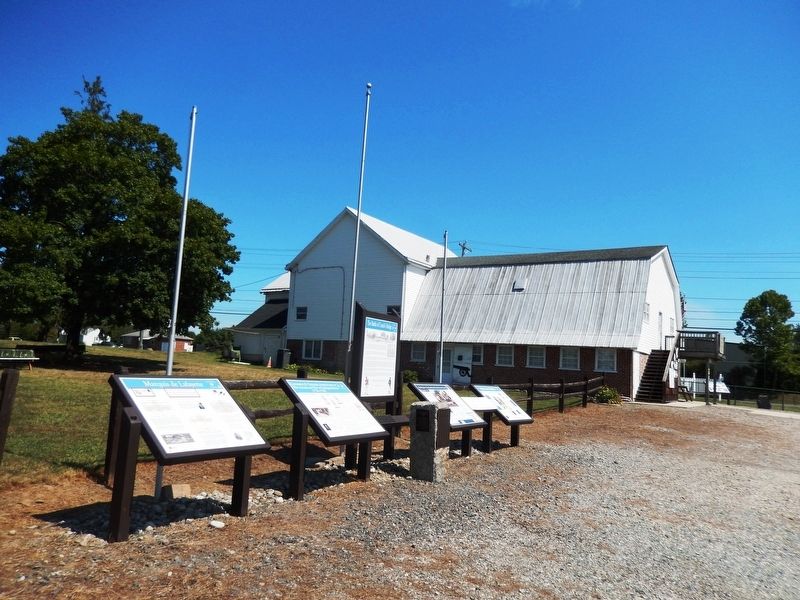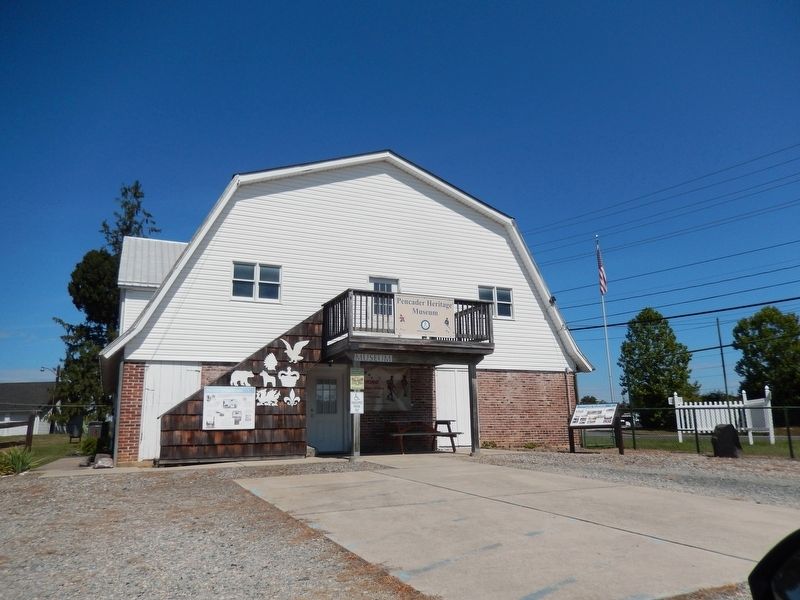Near Newark in New Castle County, Delaware — The American Northeast (Mid-Atlantic)
The Battle of Cooch's Bridge
For one week, under orders from General George Washington to “provide every possibly annoyance”, Maxwell's corps had harassed and scouted the Crown Forces army. Commanded by General Sir William Howe, the 17,000-man Crown Forces army had landed at the Head of Elk in late August intent on advancing to capture the American capital, Philadelphia.
Advancing along the Glasgow-to-Newark road at about 9 o’clock in the morning, the Crown Forces advanced guard marched into a well-prepared ambush. Elements of Maxwell’s Corps opened fire on the Hessian Jagers from concealed positions along the road. Maxwell’s orders were to engage the enemy, force them to deploy, fall back to another defensive position and delay the enemy again.
After the initial surprise, the rifle-armed jagers rallied and overran the first American position in hand-to-hand fighting. A second American line was encountered, stalling the Crown Forces advance. Howe reinforced the jagers with two British light infantry battalions and ordered these troops to outflank the American position. The advance to the right led to a swampy area - today’s Sunset Lake - effectively removing one light infantry battalion from the action. The drive to the left towards Iron Hill was more successful in outflanking the Americans, forcing them to withdraw. Eventually Maxwell’s troops were forced to cross the Christina Creek at Cooch’s Bridge, when Crown Forces artillery came into play, and Howe ordered a charge. Outnumbered, outgunned, disorganized, and low on ammunition, the Americans withdrew towards Christiana, ending the battle.
Casualties on both sides ranged 30 to 40 dead and wounded. British pioneers buried at least 24 Americans on the field in unmarked graves. Among the American officers engaged in the battle were John Marshall (future United States Chief Justice), Thomas Duff of Newport, Delaware, Alexander Martin (later Governor of North Carolina), and Francis Gurney (founder of Dickinson College).
Following the battle the Crown Forces occupied the area from Rittenhouse Park and Iron Hill to Aikens' Tavern (Glasgow). General Cornwallis established his headquarters at the Cooch House. The Crown Forces encamped in the area for five days and on 8 September marched north through Newark. On 11 September 1777, the two armies met again at the Battle of Brandywine. The local grist mills of Thomas Cooch and Andrew Fisher were used to provide flour to the Crown’s troops, and the Cooch mill was destroyed when the Crown Forces departed.
Sometimes known as the Battle of Iron Hill by American participants, the battle was the opening engagement in the Philadelphia Campaign of 1777.
Researched by Wade P. Catts, RPA
[at right] Picture by: The Pictorial Society Ltd. 1975
Erected by Pencader Heritage Area Association.
Topics. This historical marker is listed in this topic list: War, US Revolutionary. A significant historical date for this entry is September 3, 1777.
Location. 39° 38.38′ N, 75° 43.8′ W. Marker is near Newark, Delaware, in New Castle County. Marker is on Sunset Lake Road (Delaware Route 72), on the right when traveling south. The marker is on the grounds of the Pencader Museum. Touch for map. Marker is at or near this postal address: 2029 Sunset Lake Road, Newark DE 19702, United States of America. Touch for directions.
Other nearby markers. At least 8 other markers are within walking distance of this marker. Hessian Soldiers Memorial (here, next to this marker); The Royal Deux-Ponts Memorial (here, next to this marker); Washington-Rochambeau Revolutionary Route (here, next to this marker); French General Comte de Rochambeau and the French Army Memorial (here, next to this marker); Germans & German-Americans in The American War of Independence (here, next to this marker); Delaware Militia (here, next to this marker); Marquis de Lafayette (here, next to this marker); American Position (approx. 0.2 miles away). Touch for a list and map of all markers in Newark.
Regarding The Battle of Cooch's Bridge. Four occurrences of "jagers" (first two starting with capital J) each have umlaut over the "a".
"Aikens'" should have been rendered as "Aiken's".
Credits. This page was last revised on December 31, 2023. It was originally submitted on September 24, 2019. This page has been viewed 372 times since then and 38 times this year. Last updated on October 2, 2020, by Carl Gordon Moore Jr. of North East, Maryland. Photos: 1, 2, 3. submitted on September 24, 2019, by Don Morfe of Baltimore, Maryland. • J. Makali Bruton was the editor who published this page.


